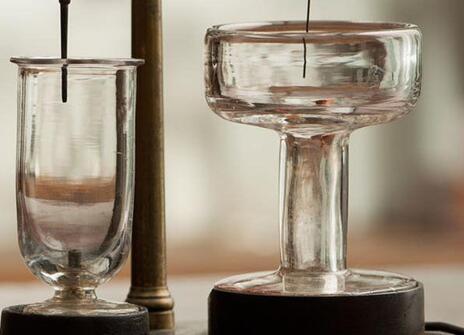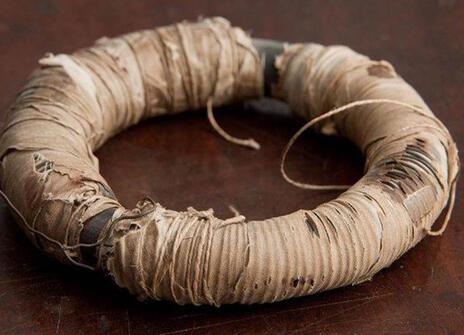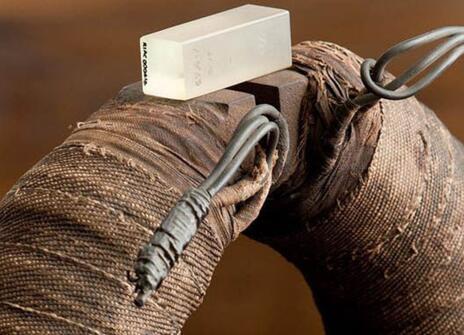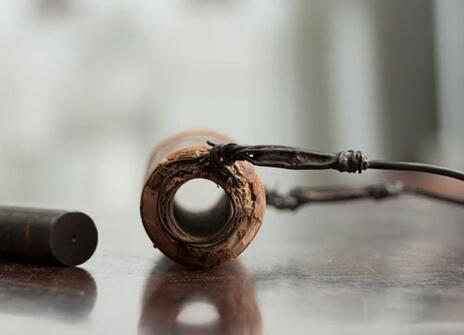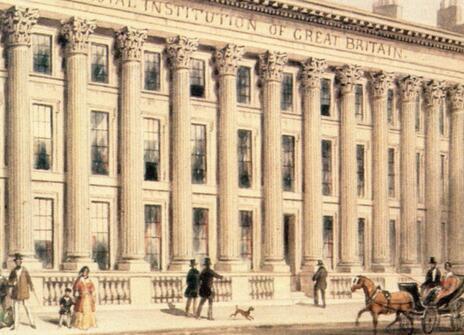On Monday 3 September 1821, in the small Royal Institution basement laboratory lit by candlelight, a young Michael Faraday made a remarkable discovery: for the first time, continuous mechanical movement was generated from electricity – a small but significant step in the history of power and a turning point in Faraday’s career.
The story begins a year earlier when a Danish polymath, Hans Christian Ørsted, discovered the phenomenon of electromagnetism. He had been experimenting at the University of Copenhagen with copper wire and electricity, joining the two together.
When he happened to pass the wire over the top of a compass, Ørsted noticed that the needle on the compass moved perpendicular to the copper wire. He had shown that a wire carrying an electrical current would affect a magnetised needle. Ørsted wrote up his findings and sent copies to every scientific journal of note.
At this time, Michael Faraday was working away at the Royal Institution undertaking laboratory supervision, lecturing and acting in the capacity of Superintendent of the House (effectively managing the institution’s day-to-day functions). He was asked to review, for the ‘Annals of Philosophy’, all the current literature and experimentation on electromagnetism.
To undertake this review, he took it upon himself to recreate Ørsted’s experiment. In order to further understand what was happening in front of him, Faraday continued to experiment, making new equipment and trying to make sense of the results.
And so it happened that on 3 September 1821, Faraday found that he could make a wire carrying an electric current move around a magnet. He called this phenomenon ‘electromagnetic rotations’ producing the world’s first electric motor as a result.
Photograph of Michael Faraday taken by John Watkins (about 1861)
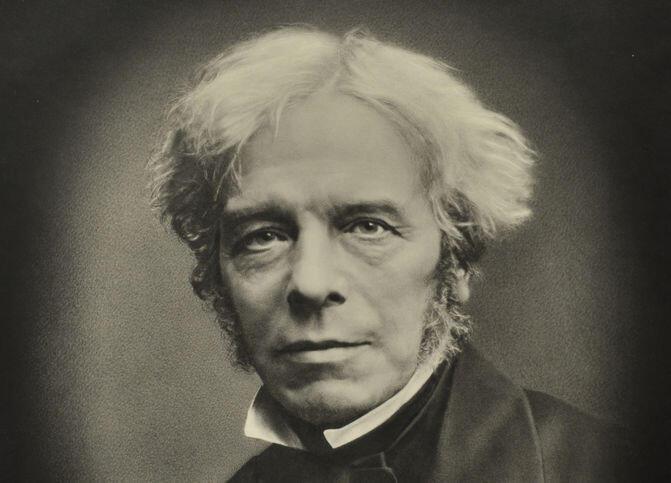
Faraday meticulously took notes of his experiments in his scientific journal, noting:
"Arranged a magnet needle in a glass tube with mercury about it and by a cork, water, etc. supported a connecting wire so that the upper end should go into the silver cup and its mercury and the lower move in the channel of mercury round the pole of the needle. The battery arranged with the wire as before. In this way got the revolution of the wire round the pole of the magnet. The direction was as follows, looking from the above down."
Forever on a quest to learn and clearly realising this was only the beginning of his experimentation on the subject, he also noted "Very satisfactory, but make more sensible apparatus".
On the following day, Tuesday 4 September, Faraday continued his work improving the apparatus and repeating the experiment. He noted:
"Apparatus for revolution of wire and magnet. A deep basin with a bit of wax at bottom and then filled with mercury, a magnet stuck upright in wax so that pole just above surface of mercury, then piece of wire floated by cork, at lower end dipping into mercury and above into silver cup as before, and confined by wire or capillary attraction from leaving the M. Pole."
Faraday wrote up his discovery for publication in the 'Quarterly Journal of Science'. This was not without difficulty though, as it was suggested by others that he had plagiarised some of William Hyde Wollaston’s electromagnetic work in his paper. A close friend of Humphry Davy and a Manager at the Ri, Wollaston declined to pursue the matter when Faraday wrote to him to apologise for any misunderstanding.
Wollaston replied:
"You seem to me to labour under some misapprehension of the strength of my feelings upon the subject to which you allude.
"As to the opinion which others may have of your conduct, that is your concern, not mine; and if you fully acquit yourself of making any incorrect use of the suggestions of others, it seems to me that you have no occasion to concern yourself much about the matter."
Faraday sent copies of his scientific paper along with pocket-sized models of his device to scientific colleagues all over the world so they too could witness the phenomenon of electromagnetic rotations themselves.
This was just the beginning of Faraday’s work on electricity and magnetism, almost exactly 10 years later in 1831, Faraday developed electromagnetic induction and generation – confirming his place in scientific history.
This historical film from the 1950s details the scientific researches of Michael Faraday undertaken at the Royal Institution and features Nobel Prize winner (and Director of the Ri) Sir William Lawrence Bragg demonstrating a Faraday cage in our iconic theatre.
